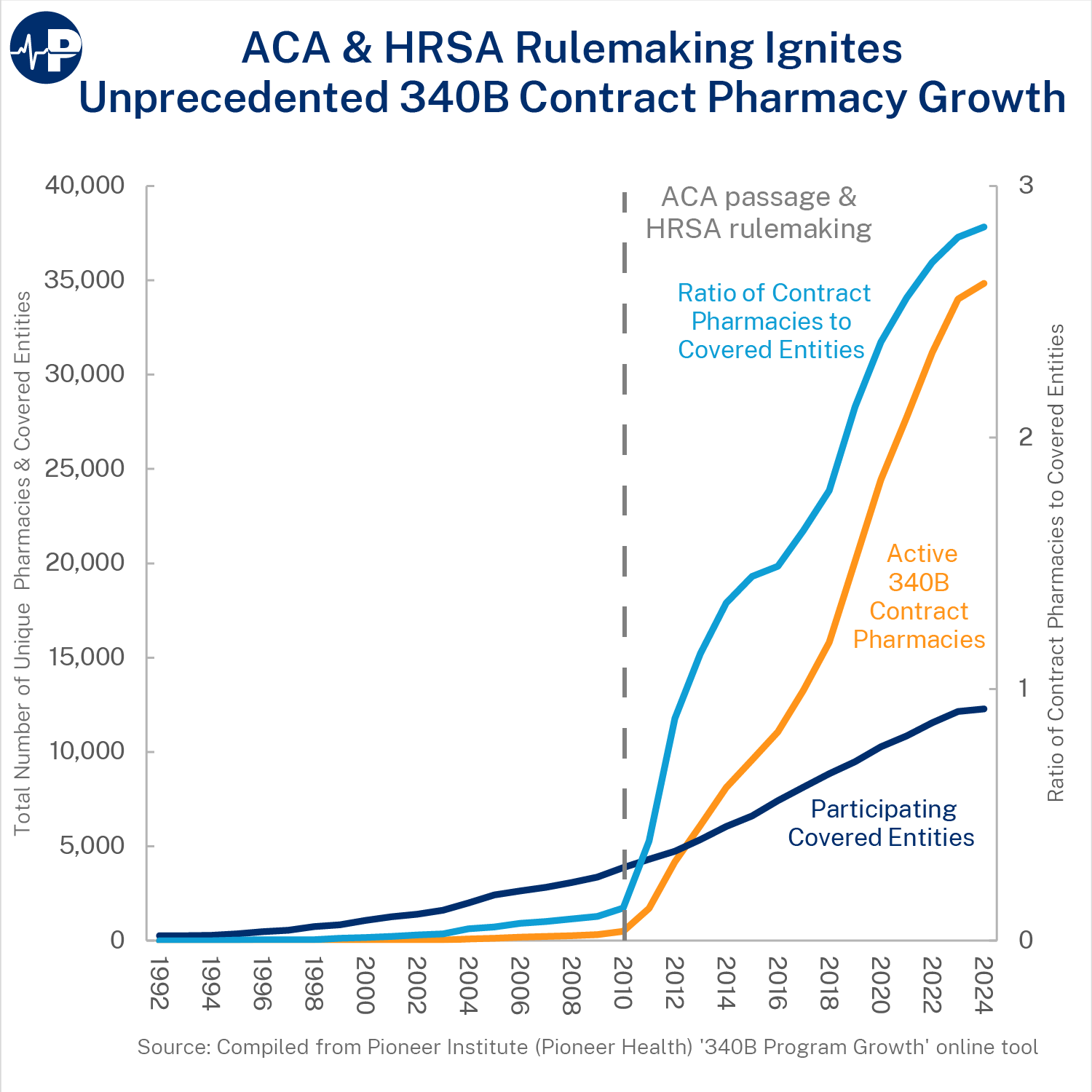The 340B Drug Pricing Program started as a small program in 1992 to better enable safety-net hospitals and other 340B covered entities (CEs) to provide care to more indigent patients by mandating that pharmaceutical manufacturers give the CEs large discounts on prescription drugs. CEs like qualifying hospitals were allowed only one off-site contract pharmacy in case they did not have an on-site pharmacy. A 340B contract pharmacy is a pharmacy that has entered into a written agreement with a 340B CE to dispense discounted drugs to eligible patients on behalf of the CE, such as retail or specialty pharmacies.
340B Growth
Explosive growth from the Affordable Care Act and an Obama administration rule implementing it have caused the 340B Program to become the second-largest drug program in the country behind Medicare Part D.
Starting in 2010, CEs were permitted to have virtually unlimited numbers of contract pharmacies, resulting in a nearly exponential increase in contract pharmacies in the program. As shown in the Paragon Pic, the number of contract pharmacies increased from 503 in 2010 to 34,840 in 2024 – a whopping 6,826 percent increase.
According to the Pioneer Institute, hospitals used 17,250 contract pharmacies in 2024, up from 76 in 2010. By comparison, the number of CEs more than tripled from 3,866 in 2010 to 12,279 in 2024. Accordingly, as the Paragon Pic demonstrates, the ratio of contract pharmacies to CEs has substantially increased.
Lack of Transparency
The contract pharmacy surge also correlates with a major increase in the program’s cost (as measured in purchases at discounted 340B prices)—from $9.0 billion in 2014 to $53.7 billion in 2022. Despite the increased number of contract pharmacies that are helping CEs bring in record revenue, it is unclear if this revenue is being used to support the program’s original intent due to lack of transparency requirements.
As a 2014 report from the Government Accountability Office notes: “without adequate oversight, the complications created by contract pharmacy arrangements may introduce vulnerabilities in the 340B Program.” Moreover, although the purpose of the 340B Program is to support safety-net providers, increasing evidence suggests that the opposite is occurring. A 2022 JAMA paper found that “contract pharmacy growth was concentrated in affluent and predominantly White neighborhoods, whereas the share of 340B pharmacies in socioeconomically disadvantaged and primarily non-Hispanic Black and Hispanic/Latino neighborhoods declined.”
No results found.



